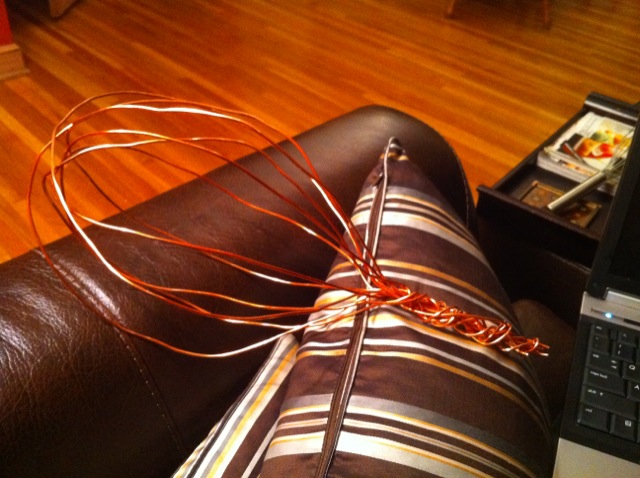Hi, I was reading through the cider threads and thought my 2 cents might be helpful. I know cider is closer to wine making than beer and I work in a winery while I'm no winemaker I've learned a bit.
The temp is a big deal, when you start to clear 70-72 F you may start to get off smells and flavors, 78 F and up and you’re asking for it. Most wine yeasts like 60 F. A lot of this can be corrected/ dissipated by aeration (this is a winemaking perspective). Note that aeration is only done during primary fermentation. I don't know much about beer/cider, I'm fermenting my 1st batch of cider ATM. In winemaking (red) daily "pumpovers"/”splash racks” are used to, among other things introduce O2 for the yeast, even out temps (hot/ cold spots), and dissipate smells. Often a sheet(s) of copper is introduced to the wine as it is being pumped over to pull some of that sulfery smell out.
I'm not suggesting daily pumpovers but 1 or 2 during fermentation might help if it’s really bad. Pumpovers really work, however if that’s not enough cupric sulfate can be added. I think a similar solution could be used in the cider if the smell is bad enough or doesn't go away. A tiny
TINY amount of cupric sulfate/ copper sulfate goes a
very very long way. Also, I’ve noticed many say they leave their cider on primary for 2 weeks or more. From a winemaking view this is bad practice, if you have a lot of lees/ sludge on the bottom rack the cider to another container. If it is fermenting it will continue to ferment in the new container, and you can add yeast nutrient to keep em’ happy (DAP diammonium phosphate, fermaid, ect.). As the food for the yeast runs out the live ones will make enzymes that break down the dead ones to utilize their nutrients (“autolysis”

. It’s all the crazy chemical reactions taking place that make the funky smells. So for the love of your cider/wine/beer rack it off.
If anyone is adventurous enough they could try sanitizing a small section of clean copper pipe for a 15 min soak and see if it helps or a splash rack during fermentation.
So far my cider smells great 4 days into fermentation. I used 2 cups brown sugar 5 gal tree top 3 apple blend 100% juice no ascorbic acid no concentrate, yeast is Lavin Rhone 4600 (leftover white wine yeast, supposedly more "fruit forward"). I'll rack to 2ndary and add raisins for fun w/ some juice to top.
Sorry about the long reply, I hope it's remotely helpful. Cheers




